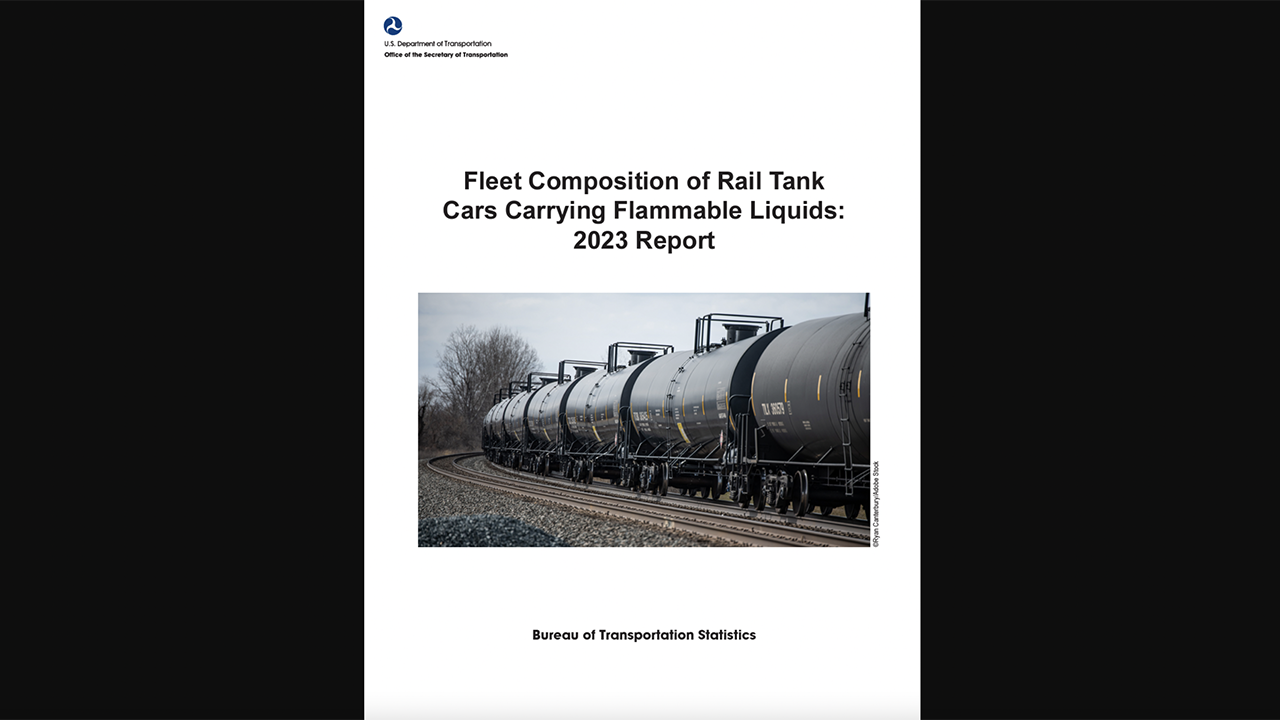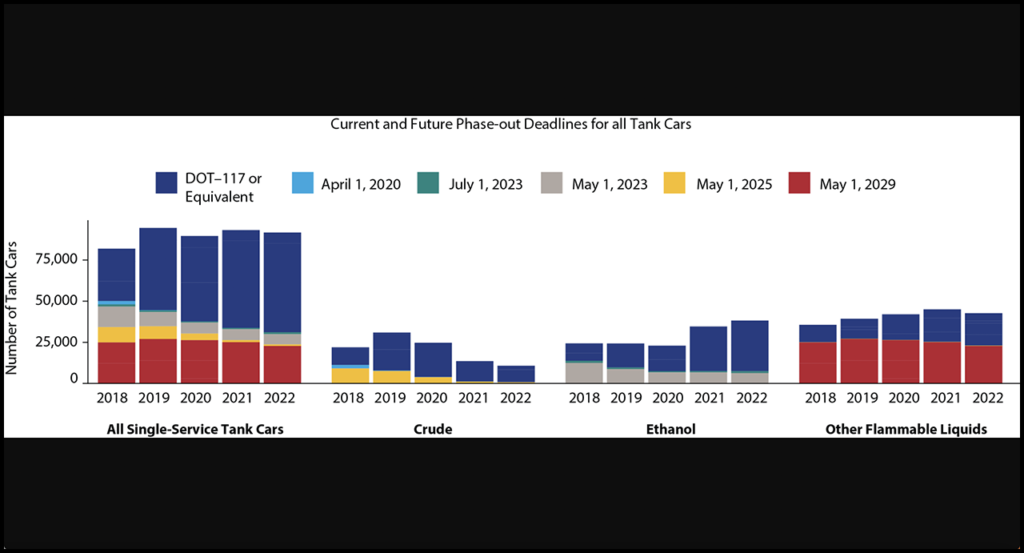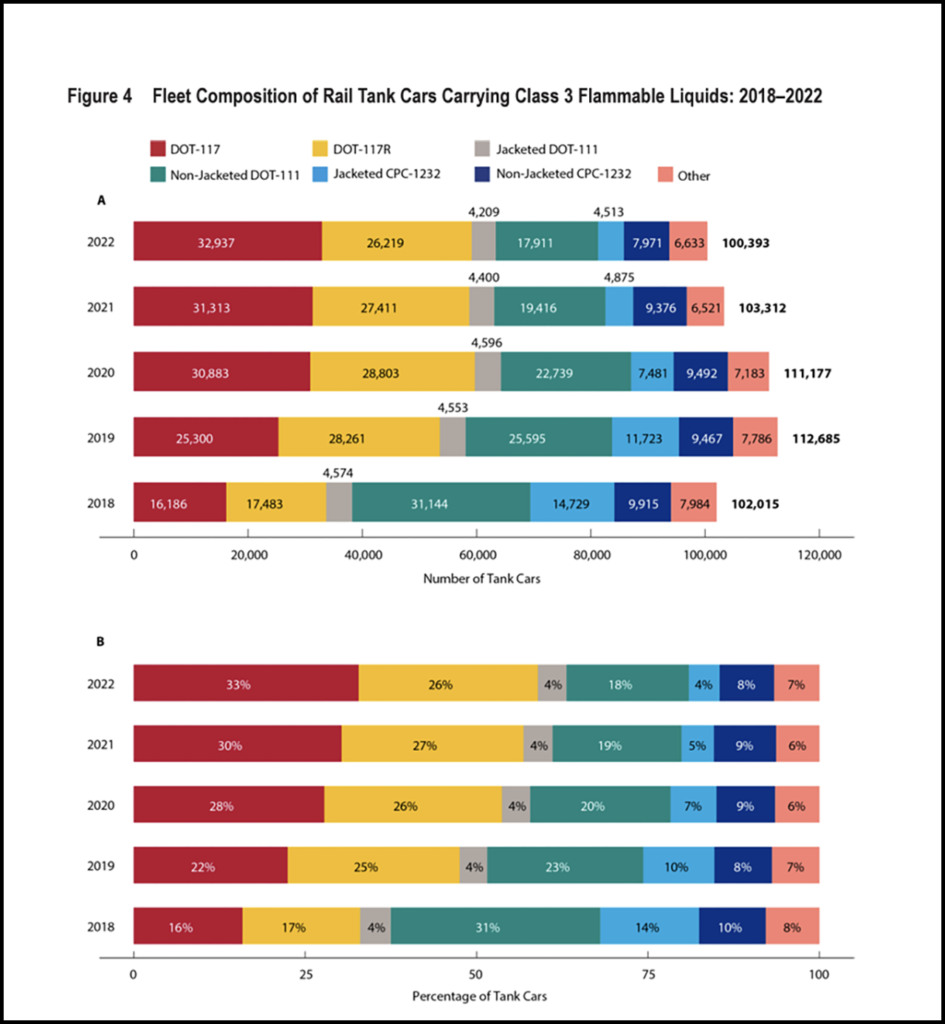
BTS Issues Report on Fleet Composition of Tank Cars Carrying Flammable Liquids
Written by Marybeth Luczak, Executive Editor
The Bureau of Transportation Statistics (BRS) has released its 2023 progress report on upgrading to the DOT-117 standard the portion of the North American rail tank car fleet that transports Class 3 flammable liquids.

This standard includes additional safety requirements and summarizes the types of rail tank cars carrying Class 3 flammable liquids, according to BTS, which issues its report annually in accordance with the 2015 Fixing America’s Surface Transportation (FAST) Act (download below). There is a rolling phase-out schedule of tank cars based on both tank car type and flammable liquid or liquids carried. All tank cars in service in 2022 that were subject to the FAST Act were compliant with the scheduled deadlines, BTS reported. There were no FAST Act phase-out deadlines required in 2022. The next deadline is for all tank cars carrying ethanol to meet the DOT-117 specifications by July 2023, according to BTS.
In 2022, 59% of all rail tank cars carrying Class 3 flammable liquids were built to the new DOT-117 specification or modified to meet the DOT-117R (retrofit) specification (see Figure 1 above), according to BTS.
Among the BTS report’s other findings:
- Among the fleet of rail tank cars that met the DOT-117 specification in 2021, 56% (32,937 tank cars) were new, and 44% (26,219 tank cars) were retrofitted. In 2022, 71% of DOT-117 rail tank cars carried either crude oil or ethanol, and 64% of DOT-117R tank cars carried either crude oil or ethanol.
- There were 100,393 rail tank cars that carried Class 3 flammable liquids in 2022—a 2.8% reduction from 2021. Of those 100,393 cars, 10,787 carried only petroleum crude oil—a 20.5% reduction from 2021 to 2022 in the number of tank cars carrying crude only, reflecting a 27.6% drop in the volume of crude petroleum movements by rail in the same period.
- The share of crude carried by new or retrofitted DOT-117 cars increased from 85.6% to 90.0% from 2021 to 2022, with the balance primarily carried by Jacketed CPC 1232 cars (6.8%) that are due to be phased out from crude oil service by May 1, 2025.
- There was a decrease in U.S. crude oil shipments and a reduction in rail tank cars carrying crude oil in 2022. “Regardless of economic fluctuations and fleet size, DOT-117s have continued to become an increasingly significant proportion of the flammable liquid carrying fleet, which is expected to meet all FAST Act phase-out deadlines by May 1, 2029,” according to the agency.
BTS said it is also required to provide “statistically sound” estimates of tank car production in the coming year that meet the DOT-117 specification. A census of rail tank car shops certified to produce or retrofit DOT-117 cars was conducted, and BTS said it is expected that 4,349 new DOT-117 cars will be produced in 2023 and 2,565 existing tank cars will be retrofitted to the DOT-117R specifications in 2023, introducing a total of 6,914 new DOT-117 or DOT-117R tank cars to the North American tank car fleet.




